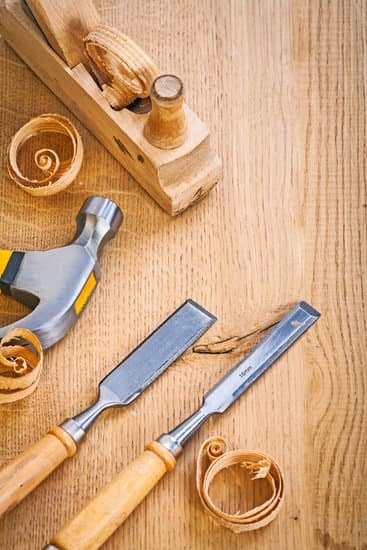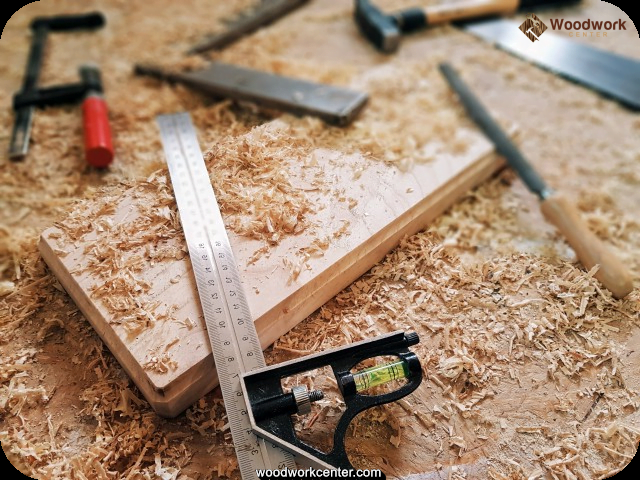Woodworking is an art that requires careful planning and precise execution. One crucial aspect of this process is sketching woodworking plans. By sketching out your ideas and designs, you can ensure that your projects are successful and meet your desired specifications. In this article, we will discuss the importance of sketching woodworking plans, how it allows for accurate measurements and visualization, and provide tips on getting started.
When it comes to woodworking, sketching plans plays a critical role in the success of your projects. It allows you to visualize your ideas before diving into the construction process. By having a detailed plan on paper, you can avoid costly mistakes and make necessary adjustments without wasting materials or time.
Additionally, sketching woodworking plans enables you to take accurate measurements. With precise dimensions drawn out, you can ensure that each component fits together seamlessly. It also allows you to map out any complex joints or angles before cutting into your materials, reducing the chance of errors down the line.
In this article, we will delve into various aspects of sketching woodworking plans to help you improve your skills in this area. We will discuss the basic tools needed for sketching, how to set up your workspace effectively, understanding scale and proportions, step-by-step guides on sketching woodworking elements, incorporating detail with measurements and annotations, utilizing digital software for advanced plans, troubleshooting common challenges faced during the sketching process, as well as ways to practice and improve your skills.
With a solid foundation in sketching techniques and understanding its importance in woodworking projects, you’ll be equipped with the knowledge needed to bring your creative visions to life. So let’s dive in and uncover the world of sketching woodworking plans together.
The Basic Tools You’ll Need for Sketching Woodworking Plans
To effectively sketch woodworking plans, it is essential to have the right tools at your disposal. While there are various tools available for this purpose, there are some basic ones that every woodworker should have. These tools will not only make the sketching process easier but also ensure accuracy in measurements and precision in visualization.
One of the most fundamental tools you’ll need for sketching woodworking plans is graph paper. Graph paper provides a grid system that allows you to create precise measurements and scale drawings. It enables you to accurately depict dimensions and proportions, making it an invaluable tool for woodworking sketches.
In addition to graph paper, pencils are another indispensable tool for sketching woodworking plans. Pencils allow for easy erasing and corrections, giving you the freedom to experiment with different designs without fear of making permanent mistakes. You may want to consider using mechanical pencils with different lead thicknesses for added versatility.
Another important tool to have is a ruler. A ruler helps you draw straight lines and measure distances accurately on your sketches. It is recommended to use a clear or transparent ruler so that you can see the lines underneath without any obstruction.
Lastly, a protractor is useful for drawing angles and arcs accurately. It allows you to measure and replicate specific angles in your woodworking plans with ease. Consider getting a protractor with both degrees and radians measurements to accommodate different projects.
While these basic tools are sufficient for most woodworkers, there are specialized tools available as well that can enhance your sketching experience. For instance, T-squares can be used in conjunction with rulers to create perfectly perpendicular lines, while drafting software like SketchUp or AutoCAD offer advanced digital capabilities for complex woodworking plans.
Having the right tools at hand lays the foundation for successful sketching of woodworking plans. They not only facilitate accurate measurement but also enable proper visualization of your project before diving into execution.
| Tool | Description |
|---|---|
| Graph paper | A grid system for precise measurements and scale drawings. |
| Pencils | Allows for easy erasing and corrections, with different lead thicknesses available. |
| Ruler | Helps draw straight lines and measure distances accurately. |
| Protractor | Useful for drawing angles and arcs with different angle measurements. |
Preparing Your Workspace for Sketching Woodworking Plans
Before you begin sketching your woodworking plans, it’s important to prepare your workspace to ensure a productive and comfortable environment. A clean and organized workspace not only helps eliminate distractions but also allows for better focus and concentration. Here are some tips on setting up a well-lit and comfortable area for sketching your woodworking plans.
Clear the Clutter
Start by decluttering your workspace to create a clean slate for your sketching process. Remove any unnecessary tools, materials, or debris that may distract or hinder your creativity. Having a clutter-free space will help you stay focused on the task at hand and allow for better organization of your sketching supplies.
Organize Your Supplies
Keep all your essential sketching tools within easy reach. This includes graph paper, pencils, rulers, protractors, erasers, and any other tools specific to your woodworking projects. Consider using storage containers or drawer organizers to keep everything neatly arranged and easily accessible.
Ensure Sufficient Lighting
Good lighting is crucial when sketching woodworking plans as it helps prevent eye strain and allows you to accurately see the details of your sketches. Position your workspace near a window if possible to take advantage of natural light during the day. Additionally, invest in a good desk lamp with adjustable brightness settings for adequate lighting during darker hours.
Create Comfortable Seating
Sketching woodworking plans can be time-consuming, so it’s important to have a comfortable seating arrangement that supports good posture. Choose a chair that provides proper back support and consider adding cushions or lumbar rolls if needed. Additionally, make sure your work surface is at an appropriate height to prevent strain on your neck or shoulders.
By taking the time to prepare and organize your workspace before sketching woodworking plans, you’ll create an environment that promotes focus, creativity, and efficiency. A clean and well-lit area with all the necessary tools within reach will help you stay organized and motivated throughout your sketching process. With a comfortable workspace, you can engage fully in the creative process of designing your woodworking projects.
Understanding Scale and Proportions in Woodworking Plans
When it comes to sketching woodworking plans, it is crucial to have a solid understanding of scale and proportions. These two elements play a significant role in ensuring the accuracy and precision of your sketches. Without proper scale or proportions, your measurements may be off, leading to flawed woodworking projects. In this section, we will discuss the concept of scale and its relevance to accurate sketching, as well as provide tips on maintaining proper proportions within your sketches.
Scale refers to the relationship between the size of an object in real life and its representation on paper. It allows us to accurately portray the dimensions of our woodworking projects in a scaled-down format. When sketching plans, it is important to choose an appropriate scale that fits your needs.
For example, if you are designing a small piece of furniture like a side table, you may opt for a 1:10 scale where one unit on paper represents ten units in real life. On the other hand, if you are working on larger projects like cabinets or workbenches, you might choose a more detailed scale such as 1:20 or even 1:50.
Maintaining proper proportions within your sketches is essential for accurate measurements and realistic representations of your woodworking projects. Proportions ensure that all components of your design are scaled correctly relative to one another. To achieve proper proportions, start by determining the overall dimensions of your project and then break it down into smaller components. Pay close attention to angles and proportions when sketching elements like joints, angles, curves, or decorative details.
One helpful technique for achieving accurate proportions is by using reference lines or grids on your sketch. These lines can act as guides for ensuring that each component is sketched at the correct size and position relative to others. Additionally, regularly checking and measuring against physical references or models can help confirm that you are maintaining accurate proportions throughout your sketch.
By understanding the importance of scale and proportions in woodworking plans, you can ensure that your sketches accurately represent your intended designs. Taking the time to properly scale and proportion each element within your sketch will ultimately aid in the success of your woodworking project. So, be diligent and mindful of these elements as you work on your next woodworking plan.
Step-by-Step Guide on Sketching Woodworking Plans
When it comes to sketching woodworking plans, following a step-by-step guide can help ensure accuracy and precision in your sketches. By breaking down the process into manageable steps, you can effectively outline the overall dimensions and include specific elements such as joints, angles, and curves. This section will provide a detailed step-by-step guide on sketching woodworking plans, helping woodworkers of all levels create accurate and professional sketches for their projects.
Step 1: Outline the Overall Dimensions
Before diving into the finer details of your woodworking plan, start by outlining the overall dimensions of the project. Use a ruler or measuring tape to determine the length, width, and height of the object you’re planning to build. Transfer these measurements onto your sketch using graph paper or a specialized drafting software for precise drawings.
Step 2: Sketch Specific Woodworking Elements
Once you have the basic dimensions in place, it’s time to add more specific elements to your sketch. Start by outlining any joints or connections in your design. Pay attention to angles and curves, ensuring they are accurately represented in your sketch. If you’re struggling with drawing certain angles or complex shapes freehand, consider using specialized tools like drafting templates or compasses to assist you.
Step 3: Add Depth and Detail
To bring your sketch to life and make it easier to visualize the final product, add depth and detail to your drawing. Consider shading certain areas or using different line weights to create dimensionality. Additionally, if there are specific materials you plan on incorporating into your project, include texture or patterns within your sketch.
Remember that practice makes perfect when it comes to sketching woodworking plans. Don’t be discouraged if your first few sketches don’t turn out exactly as planned – keep practicing and refining your skills over time. With patience and dedication, you’ll be able to create detailed and accurate sketches that will serve as an invaluable blueprint for your woodworking projects.
Adding Detail to Your Sketches
Incorporating accurate measurements and annotations in your woodworking plans is essential for ensuring that your project turns out exactly as intended. Adding detail to your sketches not only helps you visualize the final product, but it also assists in communicating your design to others who may be involved in the project. In this section, we will discuss the importance of including measurements and annotations in woodworking plans and provide techniques for accurately labeling dimensions, angles, and material requirements.
When adding detail to your sketches, it is crucial to include precise measurements. This allows you to accurately determine the size and placement of various components within your project. One technique for labeling measurements is to use numerical values with arrows pointing directly at the corresponding elements. You can use a ruler or a measuring tape to carefully measure each dimension and then transfer those measurements onto your sketch by lightly marking them with a pencil.
Annotations are another important aspect of detailed woodworking plans. By labeling key features or providing additional information about specific components, you can better guide yourself or others through the construction process. Annotations can include notes about joinery techniques, material specifications, or any other relevant details that may impact the construction of your project.
In addition to measurements and annotations, it can be beneficial to include a materials list in your woodworking plans. This will help ensure that you have all the necessary supplies before starting the project and allow you to estimate costs more accurately. You can create a separate section or box within your sketch dedicated to listing out all the materials needed, along with their dimensions if applicable.
By incorporating these detailed elements into your sketches, you will have a comprehensive guide for constructing your woodworking projects. Not only will this make the building process smoother, but it will also save time by reducing guesswork and potential mistakes during construction.
| Key Detail | Description |
|---|---|
| Precise Measurements | Accurately label dimensions using numerical values with arrows pointing directly at the corresponding elements on your sketch. |
| Annotations | Add notes about joinery techniques, material specifications, or any other relevant details that may impact the construction of your project. |
| Materials List | Create a separate section or box within your sketch dedicated to listing out all the materials needed, along with their dimensions if applicable. |
Utilizing Sketching Software for Advanced Woodworking Plans
In today’s digital age, sketching software has become an invaluable tool for woodworkers looking to create more complex and detailed woodworking plans. While traditional hand-drawn sketches have their own charm and simplicity, sketching software offers numerous advantages that can enhance the precision and efficiency of your woodworking projects.
One popular option among woodworkers is SketchUp. This 3D modeling software allows you to create realistic virtual models of your woodworking projects. With built-in tools for measurements, angles, and dimensions, it enables you to visualize your designs in a more accurate and comprehensive way. You can easily rotate the model, zoom in on specific details, or even simulate how different elements will fit together.
Another widely used sketching software is AutoCAD. Originally developed for architects and engineers, AutoCAD offers powerful drafting tools that can be applied to woodworking as well. Its intuitive interface allows you to create precise two-dimensional (2D) drawings or three-dimensional (3D) models with ease. You can also import images or sketches into AutoCAD, allowing you to trace directly over them and refine your design digitally.
The benefits of using sketching software are vast. Firstly, you have the advantage of speed – creating and modifying designs electronically is much faster than doing so by hand. Additionally, sketching software provides greater accuracy since measurements can be entered numerically rather than estimating by eye. This ensures that your woodworking plans are perfectly scaled without any potential human error.
Moreover, using sketching software opens up new possibilities for experimentation and iteration. You can easily try out different variations of a design without having to redraw everything from scratch. This freedom not only allows for more creativity but also enables you to fine-tune the details until you achieve the desired outcome.
Troubleshooting Common Challenges in Sketching Woodworking Plans
When sketching woodworking plans, it is common to encounter challenges that may hinder the accuracy and effectiveness of your sketches. Understanding these common challenges and knowing how to overcome them can greatly improve your sketching skills and the overall success of your woodworking projects.
One common challenge faced during the sketching process is maintaining proper perspective. Perspective refers to accurately representing the three-dimensional nature of an object on a two-dimensional surface. Often, sketches can appear distorted or skewed, making it difficult to interpret measurements and visualize the final product. To overcome this challenge, it is essential to practice observing objects from different angles and perspectives. Additionally, using guidelines like vanishing points or horizon lines can help maintain accurate proportions in your sketches.
Another challenge that woodworkers may encounter while sketching their plans is ensuring proper proportionality. Proportions are vital for accurately measuring and visualizing the dimensions of the final product. It is crucial to understand how different elements within a sketch relate to one another in terms of size and scale. One method for achieving proper proportions is by using gridlines or a proportional divider to break down larger measurements into smaller, manageable parts.
Details play a crucial role in woodworking plans as they provide essential information for construction and assembly. However, capturing intricate details accurately can be challenging. When faced with this challenge, it is helpful to use techniques such as hatching or cross-hatching to add texture and depth to your sketches. Additionally, taking careful measurements and using reference points can assist in capturing details more precisely.
By recognizing these common challenges and implementing appropriate solutions, woodworkers can enhance their sketching skills and improve the quality of their woodworking projects. Remember that practice makes perfect when it comes to sketching, so don’t be discouraged if you encounter difficulties along the way. With time and dedication, you will become more proficient at troubleshooting these challenges while creating detailed woodworking plans.
- Practicing observing objects from different angles and perspectives
- Using guidelines like vanishing points or horizon lines
- Using gridlines or a proportional divider to achieve proper proportions
- Employing hatching or cross-hatching techniques to capture intricate details
- Taking careful measurements and using reference points to ensure accuracy
Practice and Precision
Improving your sketching skills is key to becoming a proficient woodworker. Practice and precision are essential when it comes to accurately depicting your woodworking plans. By honing your sketching abilities, you can effectively communicate your design ideas and ensure successful projects. Here are some tips and techniques to help you improve your sketching skills.
One of the most important aspects of improving your sketching skills is consistent practice. Set aside dedicated time each day or week to sketch various woodworking elements, such as joints, angles, curves, and different types of furniture pieces. The more you practice, the more comfortable you will become with different shapes and forms.
In addition to regular practice, it can be beneficial to seek out additional resources such as books or online tutorials specifically aimed at improving sketching abilities for woodworking projects. These resources often provide step-by-step demonstrations and exercises that can help you refine your technique and develop an understanding of how different elements fit together in a design.
Another way to improve your sketching skills is by studying and analyzing existing sketches or woodworking plans created by experienced woodworkers. This allows you to observe their techniques, lines, shading, and proportions. Pay attention to how the woodworker conveys depth, dimensionality, and texture through their sketches.
Lastly, don’t be afraid to experiment with different mediums and techniques in your sketches. Try using different pencil hardnesses or even colored pencils for shading and highlighting effects. Additionally, consider incorporating hatching or cross-hatching techniques for creating texture or demonstrating different materials within your sketches.
By practicing regularly, seeking out additional resources for guidance, studying other sketches by experienced woodworkers, experimenting with mediums and techniques, you can significantly improve your sketching skills over time. Developing precision in depicting measurements and details will ultimately enhance your ability to translate your ideas into accurate woodworking plans. Remember that becoming a skilled woodworker requires both technical knowledge of woodworking techniques as well as the artistic ability to effectively convey your design ideas through sketches.
Conclusion
In conclusion, sketching woodworking plans is a crucial skill for woodworkers looking to embark on successful projects. By understanding the importance of sketching, woodworkers can ensure accurate measurements and visualization throughout the design process. The basic tools needed for sketching include graph paper, pencils, rulers, and protractors, but specialized tools like T-squares and drafting software can enhance the sketching experience even further.
Preparing a clean and organized workspace is essential before diving into sketching woodworking plans. A well-lit and comfortable area will allow woodworkers to focus on their sketches with ease. Understanding scale and proportions is also key to accurate sketching. By ensuring proper proportions within the sketches, woodworkers can achieve precise measurements when it comes time for construction.
A step-by-step guide provides a manageable process for sketching woodworking plans, starting with outlining overall dimensions and progressing to more specific elements such as joints, angles, and curves. Adding detail to sketches with measurements and annotations allows for clear communication of dimensions and material requirements. For more complex projects, digital sketching software like SketchUp or AutoCAD can be incredibly beneficial.
While challenges may arise during the sketching process, woodworkers can troubleshoot common issues such as perspective, proportion, or details by applying various solutions and techniques. It is important for woodworkers to practice their sketching skills regularly in order to improve over time. Additional resources such as books or online tutorials can also aid in advancing sketching abilities.
Frequently Asked Questions
How do you plan a woodwork project?
Planning a woodwork project involves several key steps to ensure success. Firstly, it is important to clearly define the project’s objectives and understand the exact requirements or specifications. This includes determining the desired dimensions, functionality, and overall design of the piece. Secondly, creating detailed sketches or blueprints helps visualize the final product and aids in accurately estimating materials needed.
It is essential to consider the type of wood that best suits the project’s purpose and aesthetics while also factoring in any special joinery or techniques required. Additionally, planning should include a timeline for each stage of construction and a budget to allocate resources effectively. Regularly reviewing and adjusting the plan as necessary throughout the project ensures smooth progress towards completion.
Is Sketchup good for woodworking?
Yes, SketchUp can be an excellent tool for woodworking projects. SketchUp is a 3D modeling software that provides users with a digital platform to create and manipulate virtual designs.
Its features make it particularly advantageous for woodworking because it allows for precise measurements, accurate visualization of designs in three dimensions, and easy modifications before beginning construction. With SketchUp, woodworkers can create detailed models, test different iterations of their design virtually, experiment with various materials, view potential issues or flaws from multiple angles, and make informed decisions about their project before investing time and resources into actual construction.
Can you use Sketchup free for woodworking?
Yes, Sketchup offers a free version called “SketchUp Free” which can be utilized for woodworking purposes at no cost. Although it lacks some advanced features available in paid versions like SketchUp Pro, Hobbyist License, or Studio Subscription, SketchUp Free still provides impressive functionality for many woodworking needs.
Users can access its core tools and capabilities such as creating basic 3D models, generating blueprints or cutting lists for projects, importing or exporting files in common formats like DWG or STL for compatibility with other software or machines. While certain limitations may exist compared to paid versions—such as limited cloud storage space—using the free version of SketchUp can still be helpful for woodworkers who want to explore the software’s capabilities or complete smaller-scale projects without incurring additional expenses.

Hi everyone! I’m a woodworker and blogger, and this is my woodworking blog. In my blog, I share tips and tricks for woodworkers of all skill levels, as well as project ideas that you can try yourself.





